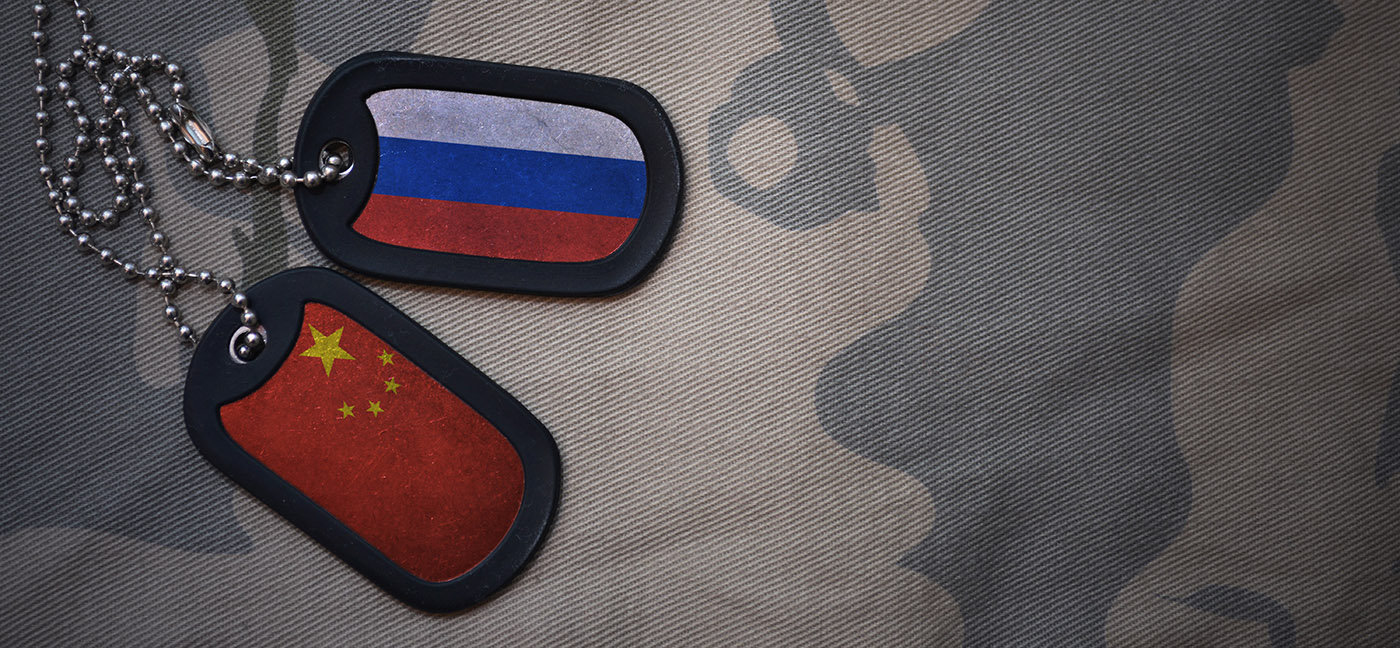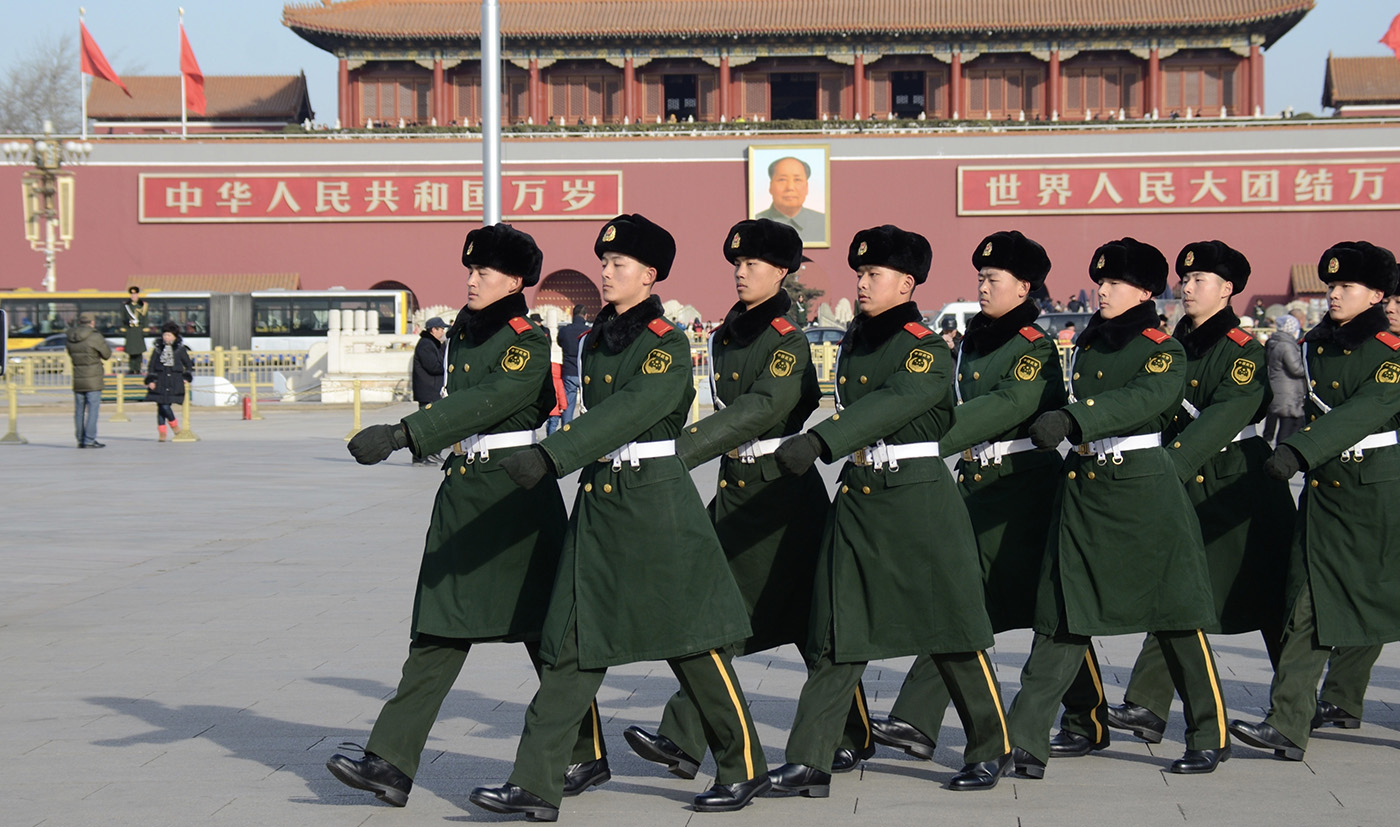2019 was an unprecedentedly good year for Russian-Chinese military cooperation featuring six joint exercises – nearly as many as Russia held with its longstanding ally Kazakhstan in that same year. However, the coming of COVID-19 in 2020 paralyzed Chinese military diplomacy and greatly reduced the quantity of interaction. Though cooperation recovered somewhat in 2021, pre-pandemic levels have not been regained, though some interesting developments did occur.
In the heady early days of the pandemic, the Russian Armed Forces’ medical specialists interfaced multiple times with the People’s Liberation Army (PLA) Military Medical University for notes on controlling the spread of the disease. The respective militaries cooperated on sealing the Russia-China border as ordered by Moscow to stop transmission of the disease. When Vladimir Putin belatedly held the 75th Victory Day parade in June, the Chinese National Defense Minister Wei Fenghe travelled to Moscow and PLA Air Force (PLAAF) Y-20 transport aircraft participated in the celebration.
Yet despite this interaction and ceremonial interfacing, mil-to-mil contacts declined overall. Russia’s annual Army International Games – one of Defense Minister Sergey Shoygu’s obsessions – had featured PLA participation in 12 different events in 2019 but only 6 in 2020. China had hosted 4 events of the Army International Games in 2019 but none in 2020, sending only a small number of troops to compete in Russia.
From 6 joint exercises in 2019, only 1 was held in 2020 but it was an important one: the strategic exercise Kavkaz-2020. Kavkaz is one of the four rotating annual exercises the Russian Armed Forces conduct as a capstone of annual training. Kavkaz, which literally means “Caucasus,” features the Southern Military District, which includes the territory between Ukraine and Kazakhstan down to Georgia and Azerbaijan. As with Vostok-2018 and Tsentr-2019, the PLA was invited to participate in the main maneuver event of the exercise, this time at Kapustin Yar alongside Armenia, Belarus, Myanmar, and Pakistan. PLA troops from the 76th Group Army of the Western Theater Command participated in the exercise. Before Vostok-2018, only Belarus ever participated in these capstone exercises; after a trial of including China and Mongolia in 2018, Russia has opened participation to countries in favor in Moscow.
As with the previous two strategic exercises to which the PLA had been invited, though the PLA took part in the grandest spectacle of the event with Putin personally looking on, the more interesting components of the exercise testing new tactical concepts occurred elsewhere without PLA onlookers. Whereas each Russian capstone exercise features a day of large and dramatic maneuvers, many ancillary events also take place generally across many different training areas. Though the capability to do large maneuvers is a source of political pride for Moscow, the key capability Russia practices in these dispersed activities is the ability to exercise command-and-control (C2) across an enormous amount of territory and ably respond to disparate combat conditions.
Despite this stilted interaction in 2020, the year still ended happily with Shoygu and Wei extending an agreement on mutual notification of launches of ballistic missiles and space vehicles in December. This agreement gives Russia and China considerable insight into the early warning detection capabilities of the other as the two countries exchange information about rocket launches around the world from satellite launches from French Guiana to North Korean rocket tests. However, whereas Wei – uniquely among Chinese officials in 2020 – visited Moscow twice first for the 75th Victory Day parade and later for a SCO ministerial, he opted to conduct this ceremony extending the agreement virtually. Indeed, Chinese government officials literally phoned in all their regular diplomatic exchanges with their Russian counterparts in late November, demonstrating that their rapprochement with Moscow was insufficient to merit risking spread of COVID-19 through an in-person meeting.
2020 nevertheless ended dramatically with only the second ever joint strategic bomber patrol over the Sea of Japan and East China Sea on 22 December 2020. 4 Chinese H-6K and 2 Russian Tu-95MS strategic bombers took part in the event surrounding the Korean peninsula. Such a joint patrol is important as it signals the ability to potentially conduct joint nuclear targeting, i.e. the most drastic act of warfare. Though this patrol is on a very small scale relative to Russian and Chinese nuclear capabilities, it would potentially be sufficient either to nullify North Korean capabilities or else disable U.S. bases in Japan and South Korea. The first such patrol took place in 2019.
Though 2020 had seen a contraction in Russian-Chinese military interaction, 2021 saw some revival albeit at a still-reduced rate from 2020. The PLA participated in Russia’s Sayanskiy Marsh competition, another Russian military prestige event focused on sports, in Shoygu’s native Tyva Republic in April. PLA participation in Army International Games events surged to 15 and Russian troops were even welcomed back to Korla to participate in 3 of these.
Instability in and the ultimate Taliban takeover of Afghanistan also prompted military conversations on Central Asian security. In August, the Russian 29th Army of the Eastern Military District travelled to Qingtongxia, China, to conduct the Sibu/Vzaymodeystvie-2021 exercise, a nominally anti-terrorist event but with strong offensive desantand reconnaissance-strike components. For the first time, Russian troops used Chinese military equipment. though the Russian Armed Forces uses the Army International Games to let other countries’ militaries practice using Russian equipment, the PLA was always allowed to bring its own equipment; this deviation from the standard Russian practice of using mil-to-mil interaction as a sales pitch may hearken future Russian military equipment purchases from China. After the fact, the Chinese Ministry of Defense claimed Xi himself had not only thought of the exercise but designated where it should be held.
Though the Chinese name for the exercise – Sibu – meaning “west” in Chinese seemingly in anticipation of the Russian strategic exercise Zapad-2021 (“zapad” means “west” in Russian), the PLA did not fully participate in the strategic exercise. Whereas the armed forces of Armenia, Belarus, India, Kazakhstan, Kyrgyzstan, and Mongolia all participated in the exercise, China along with Vietnam and Myanmar merely observed the exercise.
Russia also hosted the Shanghai Cooperation Organization (SCO) exercise Mirnaya Missiya-2021 at Donguz in September after the 2020 iteration (also planned to be held in Russia) was cancelled. This exercise also heavily featured developments in Afghanistan as a pretext, though notably did not take place in SCO member Tajikistan, which hosted a number of Russian-led exercises at other points in 2021 to signal anti-Taliban resolve.
Russia and China did resume joint naval exercises in 2021 with the renewal of the Morskoe Vzaymodestvie/Joint Sea exercise in the Sea of Japan in October. Afterward, a collective 10 ships of the People’s Liberation Army Navy ad Russian Pacific Fleet went on a joint cruise over 17-23 October into the west Pacific Ocean via the Sangar Strait, encircling Japan. This joint activity in East Asia was repeated in the air domain on 19 November 2021 with a third joint patrol of Russian Tu-95MS and Chinese H-6K strategic bombers accompanied by a Russian A-50U AEW aircraft over the Sea of Japan and the East China Sea for more than 10 hours. Once again, the Korean peninsula was surrounded by this patrol.
Within a week of this joint patrol, Shoygu and Wei had a videoconference where they again renewed the agreement on mutual notification of ballistic missile and space vehicle launches and approved a cooperation plan extending to 2025. They also took the occasion to denounce U.S. strategic bomber patrols as “increasing geopolitical turbulence” as part of a general diplomatic campaign the two capitals have launched to claim that the United States is threatening the “United Nations Charter-centered international system” rather than Russia and China threatening the “rules-based international order.” Thus, Russia and China returned to three joint exercises in 2020 not counting two joint patrols. Already in early 2022, the Pacific Fleet sent its cruiser and a destroyer to the Indian Ocean for a trilateral anti-piracy exercise with China and Iran. Though COVID-19 seems to have dampened the pace of Russian-Chinese military cooperation, it has by no means broken it. In the short term, we can probably expect a gradual return toward 2019 levels of military cooperation and further such growth unless a more serious point of contention emerges between Moscow and Beijing. China does not yet rank with the pro-Russian former Soviet republics for Russian military cooperation: in 2019, Russia conducted 6 joint exercises with the PLA but 9 each with Kyrgyzstan and Tajikistan, 11 with Armenia, and fully 17 with Belarus. China may not yet rank with these states, but the gap is closing and the spectrum of Russian cooperation with China far exceeds the range with any of Moscow’s treaty allies.





